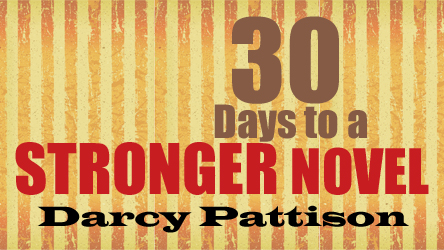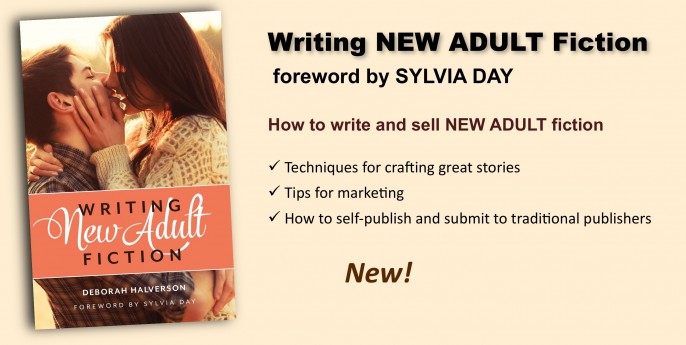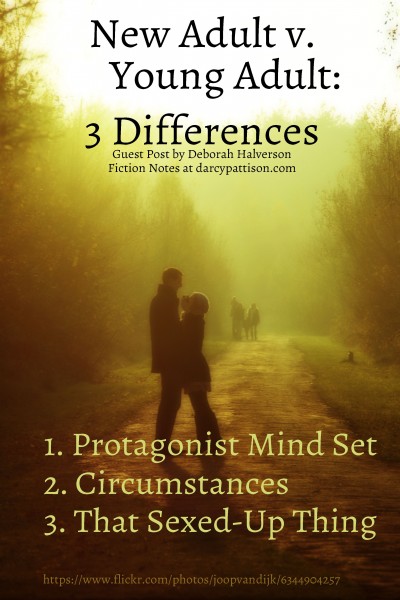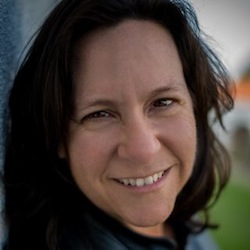 Deborah Halverson is the award-winning author of Writing New Adult Fiction and Writing Young Adult Fiction for Dummies as well as teen novels Big Mouth and Honk if You Hate Me, the picture book Letters to Santa, and three books in the Remix series for struggling readers. Formerly an editor at Harcourt Children's Books and now a freelancer specializing in Young Adult/Middle Grade fiction.
Deborah Halverson is the award-winning author of Writing New Adult Fiction and Writing Young Adult Fiction for Dummies as well as teen novels Big Mouth and Honk if You Hate Me, the picture book Letters to Santa, and three books in the Remix series for struggling readers. Formerly an editor at Harcourt Children's Books and now a freelancer specializing in Young Adult/Middle Grade fiction.
Children's book revenues have stayed relatively the same from last year to this year. YA has declined slightly. Nonfiction sales rose greatly. Note: Adult coloring books were included in that category. Board books, paper backs, picture books all saw a rise in sales. E-books stayed steady but print books were on the rise. People are consumers of both print and digital. Audio books have livened and revenues increased, and more titles were produced.
The number of indie bookstores increased by 60 new stores last year.
Opportunities in this market place:
If you are a member of SCBWI you have access to the THE BOOK. It has up-to-date information on publishers and submissions.
The picture book performance is vigorous, so there is healthy acquisition but high competition. Creativity is being rewarded in the market place.
The opportunity with chapter books lies with getting in with a publisher to write a chapter book series. This is a challenging area.
Graphic novels within middle grade is an area that's getting a lot of attention right now. It's been rising steadily.
Middle grade fiction is a great place to be. Editors are asking agents for it. Broad opportunities here.
There's a lot of YA out there right now. It's very saturated, especially in contemporary realism.
Consistent feeling that children's publishing is a good place.
Viewing: Blog Posts Tagged with: Deborah Halverson, Most Recent at Top [Help]
Results 1 - 8 of 8
Blog: The Official SCBWI 10th Annual New York Conference Blog (Login to Add to MyJacketFlap)
JacketFlap tags: Deborah Halverson, market report, #LA16SCBWI, Add a tag
Blog: The Official SCBWI 10th Annual New York Conference Blog (Login to Add to MyJacketFlap)
JacketFlap tags: #LA15SCBWI, Deborah Halverson, Add a tag
Author Deborah Halverson creates and updates the SCBWI Market Report (available as a member benefit within "The Book: Essential Guide To Publishing For Children" at scbwi.org, under 'resource library.')
Taking us inside our publishing world numbers, Deborah offers a "behind the scenes look," telling us about new submission opportunities, the influence of media tie-ins (John Green's "The Fault In Our Stars" was the top-selling e-book last year), how readers have settled into a mindset of multiple formats, and what editors are interested in seeing more of.
Deborah's keynote is packed – packed! – with information. Some highlights by age-category:
Picture Books
Diversity is important, but still need strength of story and craft as well.
Chapter Books
Editors are interested in highly illustrated upper chapter books/lower middle grade.
Middle Grade
Lots of interest in Middle Grade fiction. "Everything goes in middle grade."
Young Adult
Editors are wanting books that "push beyond a black and white view of the world."
Woven through with quotes from her interviews with editors and agents, we're getting an incredible snapshot of our industry. Two more tidbits:
There's a "sense of dynamism" re: Indie Bookstores
one editor was looking for middle grade that has "a literary soul with commercial legs."
Blog: Darcy Pattison's Revision Notes (Login to Add to MyJacketFlap)
JacketFlap tags: how to write, Deborah Halverson, NA, new adult fiction, YA, young adult, Novels, Add a tag
30 Days to a Stronger Novel Online Video Course

Sign up for EARLY BIRD list for discounts
In the immortal words of Charlotte in E.B. White’s Charlotte’s Web, “It is not often that someone comes along who is a true friend and a good writer.”
I was privileged to have Deborah Halverson edit my Harcourt picture book, Searching for Oliver K. Woodman. When we met at a retreat, it was instant friendship, and anytime we talk, it feels like we’ve been friends forever. That’s why I am so excited about this new book. Well, I’m excited because it’s Deborah’s book, but also because it’s the first book I’ve seen to explain the latest fiction genre, New Adult. In Deborah’s capable hands, the topic comes alive and I’ve already got tons of ideas for stories. Here, she answers a basic question; but if you want more, you’ve got to buy her book!

Guest post by Deborah Halverson
YA writers often ask me to explain the difference between Young Adult fiction and New Adult fiction when the story’s main character is 18 or 19 years old. Some of those writers are curious about this new fiction category that brushes up against their own, but others are trying to noodle out whether that upper YA story they’re working on is really NA. “Tell me what NA is, Deborah, and then I’ll know what I’ve got.” Happy to help! Here are three ways to determine if you’re writing a story about a young adult or a new adult.
DearEditor.com Deborah Halverson is doing a special giveaway for the blog tour for the kickoff of this book. Enter to win “One Free Full Manuscript Edit!“
Pin Down Your Protagonist’s Mind-set
How does your character process the world and her place in it? Teens are typically starting to look outward as they try to find their places in the world and realize that their actions have consequences in the grander scheme of life, and they yearn to live unfettered by the rules, structure, and identities that have defined their lives until now. New adults finally get to live that free life they dreamed of—for better or worse. They move forward with the self-exploration they began in their adolescence, going big on personal exploration and experimentation and expanding their worldview. They get to build identities that reflect who they’ve become rather than who they grew up with, and they get to try things out before settling into a final Life Plan. All of this can be overwhelming even when it goes well—after all, even good change is stressful, and “change” is new adulthood in a nutshell. For some, though, the instability is a total freak-out. The clash of ideal vs. reality can shock their system. They’re gaining experience and wisdom hand over fist, but yikes. Luckily, new adults tend to brim with personal optimism, and their explorations and experimentations—both dangerous and beneficial—are endearingly earnest.
If this sounds like your protagonist and her circle of friends, you might have an NA on your hands. You can use this knowledge to give your story a solidly NA sensibility by exposing your character’s inexperience in her decision-making, by imbuing the narrative with a sense of defiance, by conveying stress, by conveying self-focus (not selfishness), by lacing the exposition with personal optimism, and by showing the character’s awareness of her growing maturity. YA characters who are overly analytical about themselves and others risk sounding too mature, but NA character journeys ooze with self-assessment no matter the individual details of their journeys.
Assess Your Circumstances
 In fiction, the plot exists to push the protagonist through some kind of personal growth. Thus, our character’s mind-set and the plot are interdependent. Whether your character is a young adult or new adult, the circumstances of your story—the events, problems, places, and roles—should sync with that character. New adults tackle their problems with their new adult filters in place, whether the story is a contemporary one set in college, or a historical one, or a fantastical one. Self-actualization is an essential growth process whether you’re at a college kegger or battling evil overlords.
In fiction, the plot exists to push the protagonist through some kind of personal growth. Thus, our character’s mind-set and the plot are interdependent. Whether your character is a young adult or new adult, the circumstances of your story—the events, problems, places, and roles—should sync with that character. New adults tackle their problems with their new adult filters in place, whether the story is a contemporary one set in college, or a historical one, or a fantastical one. Self-actualization is an essential growth process whether you’re at a college kegger or battling evil overlords.
Once you’ve pinpointed whether your protagonist’s mindset feels YA or NA, consider if your plot events and the circumstances of your protagonist’s life jive with her concerns, fears, coping skills, maturity, and wisdom level. NA story lines tend to remove structure and accountability, tweak the characters’ stress levels by playing musical careers and homes, make money an issue, force the characters to establish new social circles at play and at work, show characters exhibiting ambivalence to adult responsibilities, show characters divorcing from teenhood, show characters striving to “move on from trauma” rather than to “survive trauma”, deny the characters the “ideal” NA life of carefree self-indulgence, put characters in situations that clash their high expectations for independent life against a harsh reality, and show the process of evaluation, of trial-and-error, of weighing exploration and experimentation against consequences, at least by the end of the story.
Deal with the “Sexed-Up YA” Thing
Romance is part of almost any older YA story, and certainly all NA. As it should be—romance is one of the three main areas of identity exploration after puberty, along with career and worldview (think politics, faith, and personal well-being and outlook). The difference is that teens are very solidly in the “what is love, what does it feel like?” realm, whereas new adults are generally working on who they want to be in a relationship, what they want from their partner, what they want from the relationship in general. That doesn’t mean they’re actively searching for Mr./Mrs. Right—there’s plenty of time for that!—but it does mean they want a satisfying, meaningful relationship. Where is your character on that romance spectrum?
Of course, romance isn’t really what people focus on when comparing YA and NA relationships, is it? Nope: it’s sex. So let’s talk about sex. In its early days, NA was accused of being “sexed-up YA”, but after reviewing numbers 1 and 2 above, you’ll see that the differences between YA and NA are more substantial than simply how explicitly you describe two bodies connecting sans clothing. Ask yourself your goal with the romance, and what level of sexual detail is necessary for that goal. Then consider your audience: NA readers are mostly adults of the same 20- to 44-year-old “crossover reader” demographic that shot YA into the publishing stratosphere. (A Digital Book World study reported 2013’s dominant YA crossover readership as being 20- to 29-year-olds; compare that to the 18- to 25-year-old age range of new adulthood). Those grownups can handle—and often flat-out want—explicit sex scenes. Some teens will read NA, but mostly they’re not into that mind-set yet so the stories don’t resonate with them, making them plenty happy to stick with the many great YA stories out there that reflect their current time in life.
Perhaps you determine that your character’s mind-set and story circumstances are solidly YA but you want/need to include some sex scenes in your story because the theme or plot of the story calls for it. In that case, maybe you have a solid YA that requires a “Mature YA” categorization to let readers know that there’s sexual content between those covers. Those scenes will be tamer than the full-on explicitness of NA—your are writing/positioning this story primarily for and about young readers after all, and there are gatekeepers involved—but the sexual content is there and readers are warned. Weigh your goals with your romance, your story’s scene needs, and your audience’s expectations and sensibilities as you make the NA/YA determination on this aspect of your WIP.
So there you have it. Three ways to know if that story you’re writing is Young Adult fiction or New Adult fiction. Good luck with your WIP, and with all your publishing endeavors.
 Deborah Halverson is a veteran editor and the award-winning author of Writing Young Adult Fiction For Dummies. Her latest book, Writing New Adult Fiction, teaches techniques and strategies for crafting the new adult mindset and experience into riveting NA fiction. Deborah was an editor at Harcourt Children’s Books for ten years and is now a freelance editor, the founder of the popular writers’ advice website DearEditor.com, and the author of numerous books for young readers, including the teen novels Honk If You Hate Me and Big Mouth with Delacorte/Random House. For more about Deborah, visit DeborahHalverson.com or DearEditor.com.
Deborah Halverson is a veteran editor and the award-winning author of Writing Young Adult Fiction For Dummies. Her latest book, Writing New Adult Fiction, teaches techniques and strategies for crafting the new adult mindset and experience into riveting NA fiction. Deborah was an editor at Harcourt Children’s Books for ten years and is now a freelance editor, the founder of the popular writers’ advice website DearEditor.com, and the author of numerous books for young readers, including the teen novels Honk If You Hate Me and Big Mouth with Delacorte/Random House. For more about Deborah, visit DeborahHalverson.com or DearEditor.com.
Blog: Galley Cat (Mediabistro) (Login to Add to MyJacketFlap)
JacketFlap tags: Children's Books, John Green, John Grisham, Julie Strauss-Gabel, Deborah Halverson, Ally Condie, Mary Lee Donovan, Add a tag
Hundreds of writers gathered at the Society of Children’s Book Writers and Illustrators (SCBWI) Summer Conference in Los Angeles last weekend.
The annual “Editor’s Panel” featured a star-studded collection of editors, including Dutton Children’s Books publisher Julie Strauss-Gabel–she’s worked with Ally Condie, John Green and John Grisham, among many others. Strauss-Gabel snapped that photograph of her view from stage during the panel. GalleyCat was there, gathering advice for aspiring writers…
1. You need to send the manuscript to the right editor. Strauss-Gabel explained: “I’m very attentive to fit both the imprint and if it is a good manuscript for me. We mean it when we say ‘this is not the right manuscript for me.’ I know another editor could bring something to that manuscript that I couldn’t.” She advised writers to read an editor’s body of work and understand what kind of books they love.
New Career Opportunities Daily: The best jobs in media.
Add a CommentBlog: The Official SCBWI 10th Annual New York Conference Blog (Login to Add to MyJacketFlap)
JacketFlap tags: Deborah Halverson, #LA14SCBWI, Add a tag
 |
| Deborah Halverson |
Editor and Author Deborah Halverson - who writes both fiction and craft books about writing, is SCBWI's market reporter. As Lin Oliver says in her introduction to this keynote, this promises to be:
"The most practical and useful session you will attend in the next twelve months"
In every attendee's folder, there's a copy of the "2014 SCBWI Market Survey: Publishers of Books for Young Readers"
(The Market Survey is also available for SCBWI members at the scbwi.org website.)
Deborah created this "market snapshot" based on interviews with 17 industry insiders - agents, editors, sales managers and independent market experts.
She starts by explaining to us where the market is today (now we all know that if you take out the "Hunger Games bump," the market has been pretty consistent since 2012.)
Deborah is highlighting the new opportunities for attendees (new publishing houses and imprints) and the submission changes.
Then she shares what the experts are telling her is going on, for picture books, chapter books, nonfiction, middle grade and young adult fiction.
She goes into the impact of the Common Core curriculum, the penetration of ebooks and digital by category, and reports on how the submissions editors are seeing sync with what they want.
A few highlights:
There's an upswing in picture book sales and market demand - Young picture books.
Re: diversity in picture books, editors prefer projects that aren't heavy handed. Books that include cultural elements that aren't about the diversity.
Editors and Agents tell her that they eagerly seek middle grade concepts.
One area of cautious interest is realistic contemporary YA… the challenge is "finding stories about normal kids in normal school environments that stand out from other stories about normal kids in normal school environments."
With all this scoop about trends, Deborah cautions us to not write for the trend!
And the final take-away:
One editor told her "I'm not looking to reject. I'm looking to find."
Blog: The Official SCBWI 10th Annual New York Conference Blog (Login to Add to MyJacketFlap)
JacketFlap tags: #LA14SCBWI, Lee Wind, Deborah Halverson, Pre-Conference Interviews, Add a tag
The first SCBWI Team Blog pre-conference interview is in!
Editor, Author of picture books, novels and the craft books "Writing Young Adult Fiction For Dummies" and the July 2014 release "Writing New Adult Fiction," Deborah will be on faculty doing quite a bit of cool stuff at the upcoming 2014 SCBWI Summer Conference, including a keynote, breakout session and Monday intensive!
Deborah and I spoke about whether "New Adult" is really just YA with more sex, how to craft a youthful narrative voice, what's behind the "Market Report" that Deborah puts together for conference attendees, and the often untapped power of setting.
Click here to read the post - it was a great discussion!
If you want to see Deborah and learn from her in person, you'll have to join us at the 2014 SCBWI Summer Conference in Los Angeles, August 1-4. Click here for more information and to register.
Illustrate and Write On,
Lee
Blog: Teaching Authors (Login to Add to MyJacketFlap)
JacketFlap tags: Book review, books about writing, Esther Hershenhorn, Deborah Halverson, Add a tag
Ten Reasons Why I Heartily Recommend WRITING YOUNG ADULT FICTION FOR DUMMIES
 If you read Carmela’s June 29 up-close-and-personal interview with TeachingAuthor Deborah Halverson, today’s post, listing ten reasons why I heartily recommend Deborah's newest book, WRITING YOUNG ADULT FICTION FOR DUMMIES (Wiley Publishing, 2011), should come as little surprise.
If you read Carmela’s June 29 up-close-and-personal interview with TeachingAuthor Deborah Halverson, today’s post, listing ten reasons why I heartily recommend Deborah's newest book, WRITING YOUNG ADULT FICTION FOR DUMMIES (Wiley Publishing, 2011), should come as little surprise.(For the record, I could have listed at least 10 more.)
Blog: Darcy Pattison's Revision Notes (Login to Add to MyJacketFlap)
JacketFlap tags: darcy's books, triplets, oliver k. woodman, Big Mouth, Deborah Halverson, Euorpe tourism, Honk if You Hate me, map project, Add a tag
Halversons Take Oliver to Portugal, Spain, France and London, England
One of the nicest things about working on the Oliver K. Woodman books were my editors at Harcourt. They were smart, efficient and experts in making a picture book’s text and images come together.
Deborah Halverson did most of the editing work on Searching for Oliver K. Woodman. Then — well, her life took an interesting turn: she had triplets. Yes, three sons.
Add to that, she sold two YA novels of her own!
Add to that, she decided to stay home with her sons and enjoy them and write.
Add to that, her DH decided to do a year as an exchange teacher in England.
And you get her fascinating blog about the “Thrills, Chills and Spills of Being a Triplet Mom and Writer. . .” The stay in England has been fascinating to watch through her eyes and through the antics of her boys.
Deborah was kind enough to take Oliver on their recent family trip to Portugal, Spain, France and London. They have posted some photos on Deborah’s blog and uploaded the rest to the Oliver K. Woodman Map Project.
By the way, she also does freelance editing - when the triplets are asleep - so check out her website. Read her books. Read her blog!
Post from: Revision Notes Revise Your Novel! Copyright 2009. Darcy Pattison. All Rights Reserved.
Related posts:







